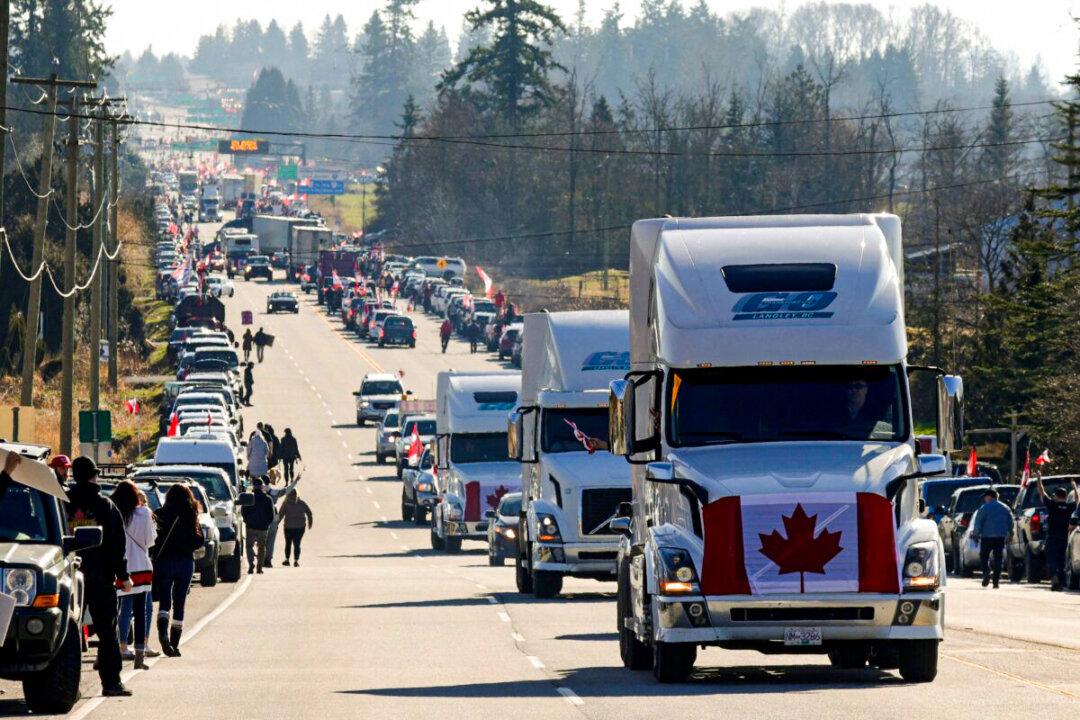SURREY, B.C.—Despite the Royal Canadian Mounted Police’s (RCMP) redoubled efforts to prevent a convoy of trucks and other vehicles from establishing a stronger presence at the Pacific Highway Border Crossing in Surrey, British Columbia, one truck managed to get through the police blockade.
On Feb. 12, an initial surge of about 20 commercial and personal vehicles had broken through the blockade before police reinforcements were quickly dispatched to halt access to the intersection eight blocks north of the border, later expanding it to 16 blocks.





